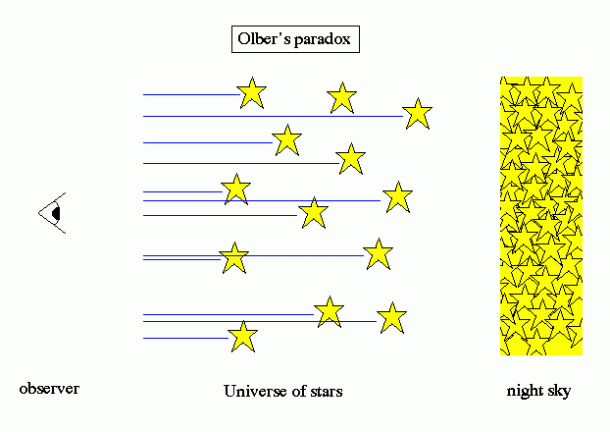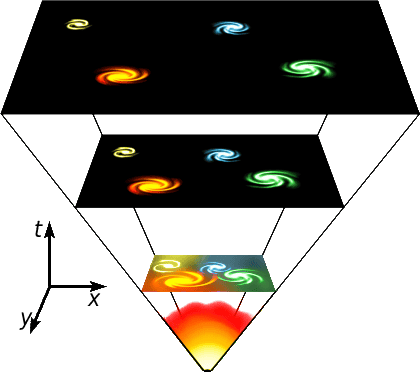Most of us have wondered about the vastness of the universe; human beings have been wondering about the cosmos for as long as we know about early civilizations, even the cave markings are a sign of our curiosity. What we probably never wondered was the color of the cosmos, until 1823.

If you have ever wondered why the sky is blue in daytime, you might have been familiar with the scattering of light from the nearby source of bright light we call the sun. It only happens on earth and not on other heavenly bodies, say moon because the moon does not have an atmosphere, from where the scattering is taking place.
When we look up at the sky from Earth, it’s brightly lit, it is intuitive to think that many stars scattered in the universe will make the outer-space bright. German astronomer Heinrich Wilhelm Olbers struggled with this idea we now know as Olbers Paradox. The paradox is such that if the universe is infinitely vast and infinitely old, then everywhere we look, there should be stars and hence space should be bright when in fact it is quite the contrary.

The solution to which lead to The Big Bang Theory, where physicists came up to the conclusion that the universe is not infinitely old, and came into being around 15 billion years ago. Hence the observable universe is only as far as the light can travel in these 15 billion years of time. The expansion of universe affects the wavelength of the visible light from these stars, where they will no longer belong to the visible spectrum.

The phenomenon can also be seen when a source of light moves away from the observer, the wavelength increases, meaning it becomes redder and less visible obeying doppler’s effect. Hence the more expansion occurs in cosmos, the darker it grows.
Credits: Psys.org
StarChild


